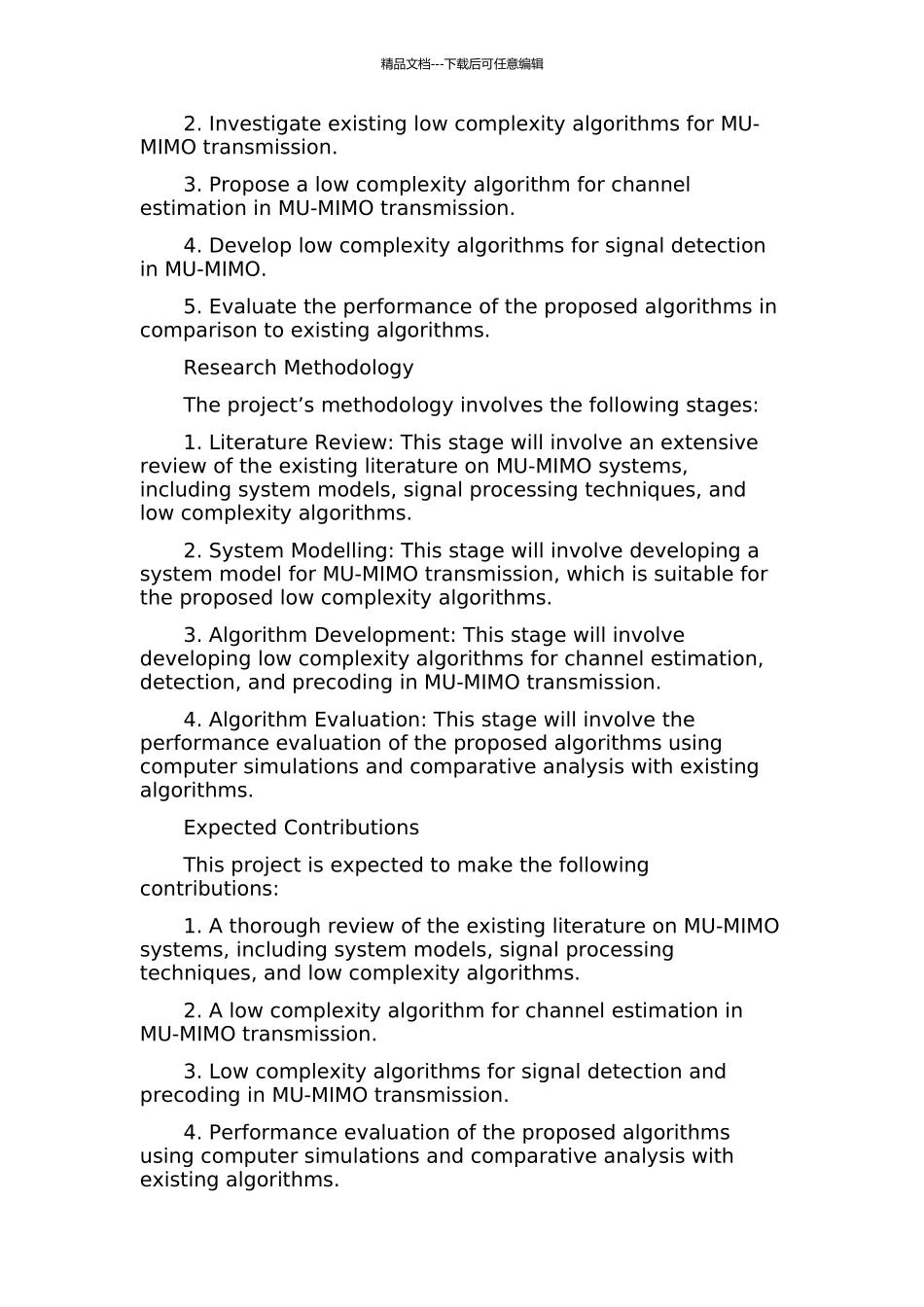精品文档---下载后可任意编辑MU-MIMO 系统下行链路的低复杂度算法的开题报告IntroductionMultiple-Input-Multiple-Output (MIMO) has been a well-known technique used in wireless communication systems to provide higher data rates and better system reliability. However, the introduction of Multi-User Multiple-Input-Multiple-Output (MU-MIMO) has further increased the capacity of the wireless communication system.In MU-MIMO systems, multiple users share the same downlink transmission simultaneously. This increases the system capacity and provides a more efficient use of the available spectrum. However, MU-MIMO systems also introduce some challenges, such as increased channel estimation complexity, multiuser interference and inter-user scheduling.Low complexity algorithms for MU-MIMO transmission have been widely researched to mitigate the challenges and improve system performance. This project aims to explore the development of low complexity algorithms for the downlink transmission of MU-MIMO systems.Problem StatementIn the downlink transmission of MU-MIMO systems, a significant amount of processing is required to handle multiple users’ data streams simultaneously. The signal processing complexity in MU-MIMO systems is higher than that in Single-Input-Single-Output (SISO) and Single-Input-Multiple-Output (SIMO) systems.The high complexity nature of MU-MIMO signal processing poses practical limitations, especially in real-time applications such as video conferencing and real-time gaming. Therefore, there is a need to develop low complexity algorithms for MU-MIMO transmission.Research ObjectivesThe primary aim of this project is to develop low complexity algorithms for the downlink transmission of MU-MIMO systems. The specific objectives of the research are:1. St...


